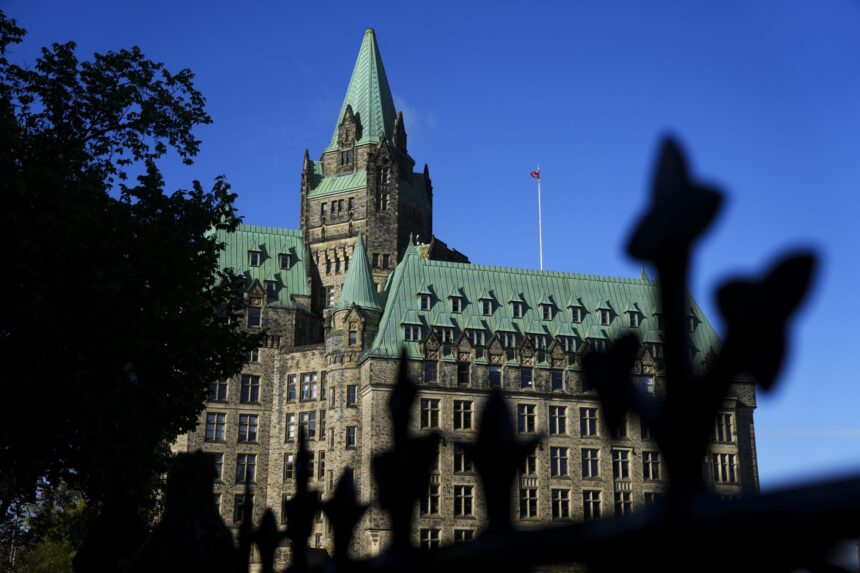In a Parliament adorned with autumn colors, Finance Minister Chrystia Freeland delivered Canada’s Fall Economic Update yesterday, unveiling a cautiously optimistic vision against the backdrop of global economic turbulence. The widely anticipated fiscal presentation revealed a delicate balancing act between addressing immediate economic pressures and maintaining long-term financial sustainability.
“Today’s update demonstrates our government’s commitment to fiscal responsibility while ensuring Canadians have the support they need during these challenging times,” Freeland stated to a chamber divided in its reception. The announcement comes as inflation has gradually moderated to 2.8%, though everyday costs continue to strain household budgets across the country.
At the core of the update is a revised deficit projection of $38.4 billion for the 2025-26 fiscal year, representing a modest improvement from the $42.7 billion forecasted in the spring budget. This adjustment reflects stronger-than-expected tax revenues, particularly from corporate sectors benefiting from the post-pandemic economic recovery. However, Canada’s economic landscape remains complicated by persistent supply chain disruptions and labor market tensions.
The update introduces targeted measures aimed at cost-of-living relief, with $4.2 billion allocated to a temporary expansion of the Canada Housing Benefit for low-income renters and an additional $2.6 billion for the enhancement of the Canada Workers Benefit. These interventions come as housing affordability reaches crisis levels in major urban centers, with average home prices now exceeding $780,000 in Toronto and Vancouver.
Parliamentary Budget Officer Yves Giroux offered measured commentary on the update: “The fiscal trajectory shows incremental improvement, but structural challenges remain. The deficit reduction relies heavily on economic growth assumptions that may prove optimistic given global headwinds.”
Conservative opposition leader Pierre Poilievre criticized the update as “insufficient and misdirected,” arguing that “Canadians need fundamental tax relief and regulatory reform, not temporary patches on a broken economic framework.” His comments highlight the growing political divide over Canada’s fiscal direction as the next election cycle approaches.
The economic update also acknowledges global uncertainty, with provisions for potential disruptions from ongoing geopolitical conflicts and trade tensions. A new $1.8 billion resilience fund aims to strengthen supply chains for critical goods, while $3.4 billion is earmarked for clean technology investments aligned with the government’s emissions reduction targets.
For typical Canadian households, the update offers moderate relief rather than transformative change. A family of four earning $90,000 annually can expect approximately $1,200 in additional benefits through various programs, though economists note this may be largely offset by continuing inflation in food, housing, and energy costs.
Business reaction has been cautiously positive, with the Canadian Chamber of Commerce welcoming productivity-focused tax incentives while expressing concern about the pace of deficit reduction. “The business community acknowledges the government’s efforts to balance social supports with economic growth drivers, but we need a clearer path to fiscal sustainability,” noted Chamber President Perrin Beatty.
Provincial responses have varied along predictable lines, with resource-dependent provinces expressing disappointment at what they perceive as insufficient support for traditional energy sectors, while others welcomed increased health transfers and infrastructure investments.
As global markets digest the update, the Canadian dollar remained relatively stable, reflecting investor perception that the fiscal plan contains few surprises. Bond yields saw minimal movement, suggesting that debt markets had largely priced in the government’s approach.
The economic update arrives at a pivotal moment for Canada’s economic future, with competing pressures from technological disruption, demographic shifts, and climate adaptation requirements. While addressing immediate concerns, questions persist about whether these measures sufficiently prepare the nation for long-term structural challenges in the global economy.
As Canadians process this latest fiscal blueprint, the fundamental question remains: Does this economic update merely manage current pressures, or does it truly position Canada for sustainable prosperity in an increasingly unpredictable world?
















